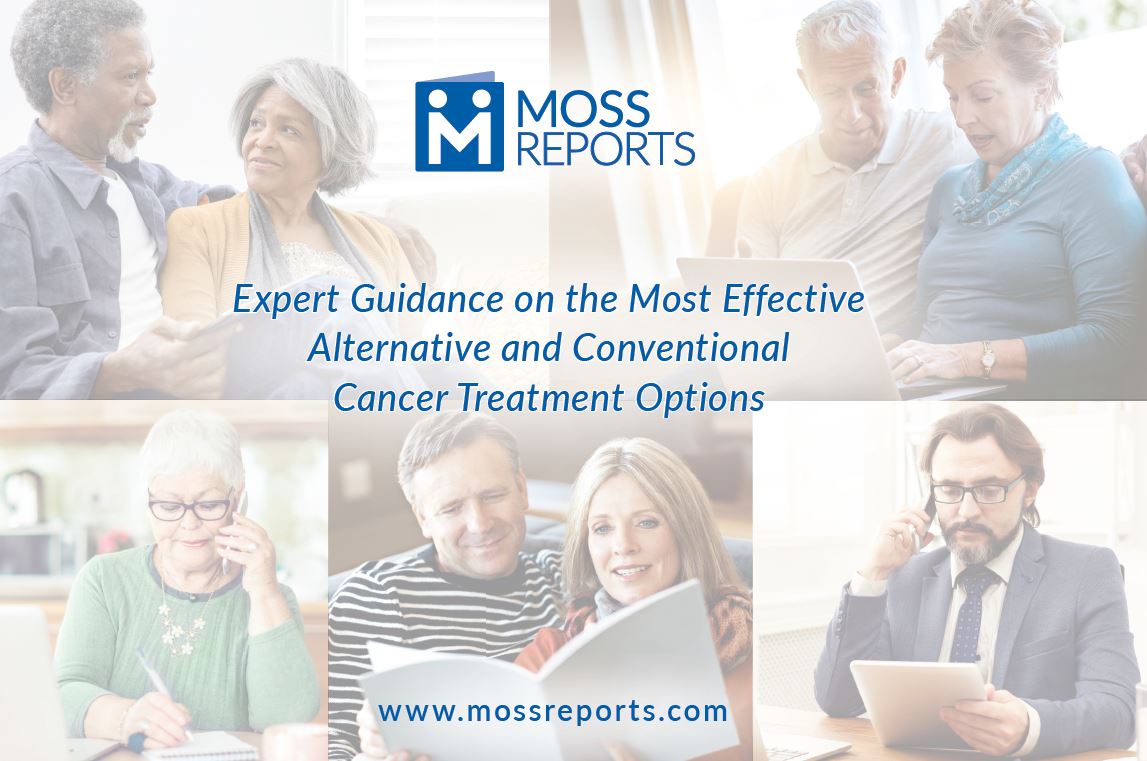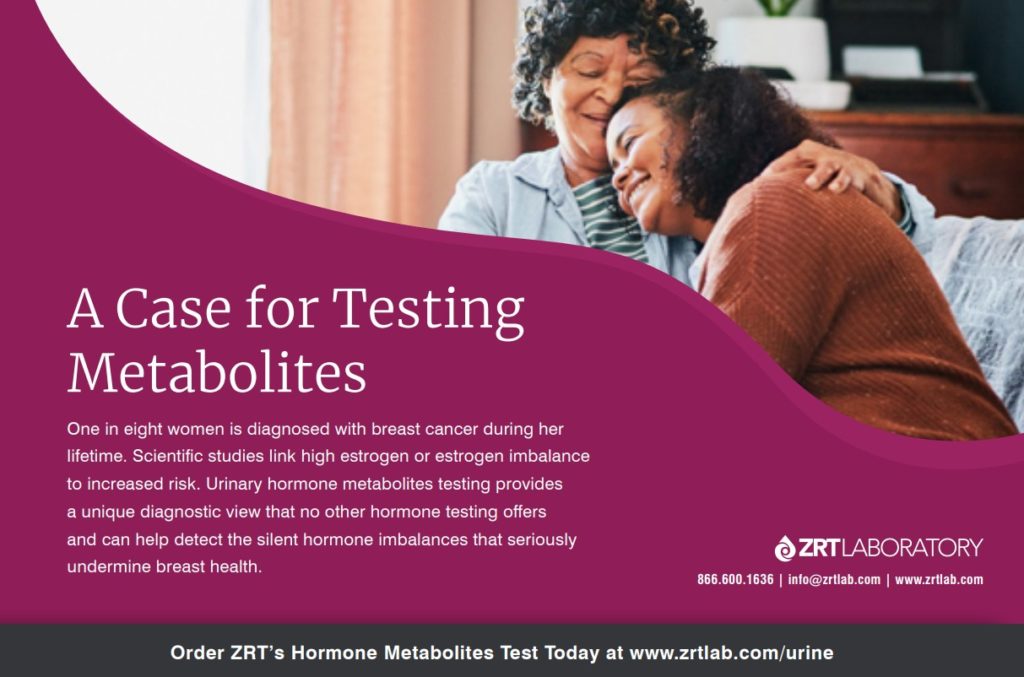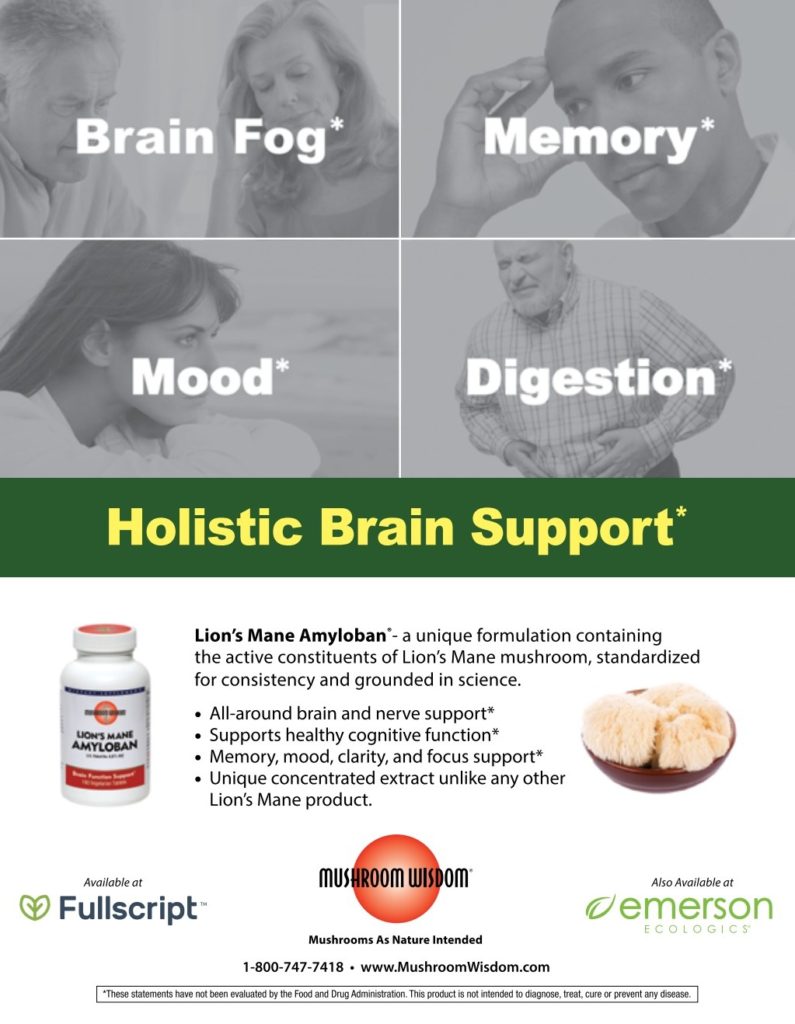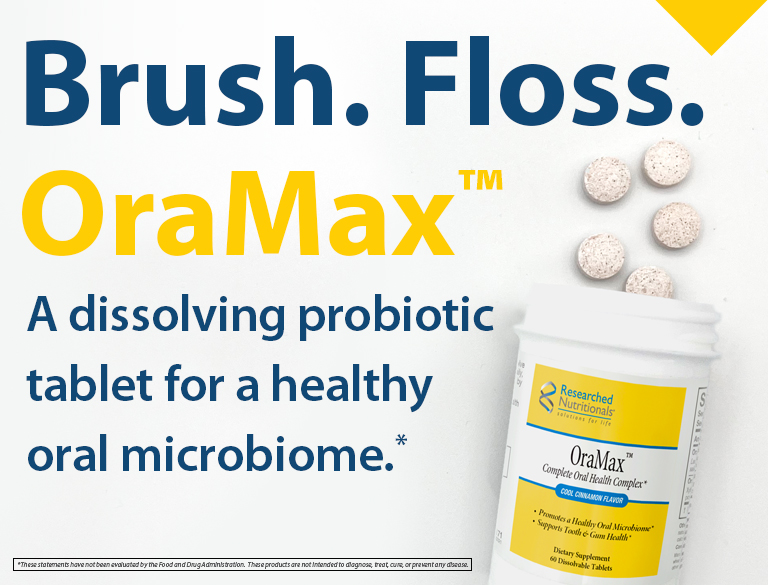© 2019 Ralph W. Moss, PhD

Issue #433/434
Cover Image: Ralph Moss, PhD
I had been writing about cancer for 40 years (and almost 20 years for Townsend Letter) when I myself was diagnosed with an aggressive form of the disease in the summer of 2015. That summer, my wife and I had taken an unconventional blood test called ONCOblot, which purported to tell not only if one had cancer, but the specific type. (This test is no longer available.) My wife’s results were all clear, but I scored positive for prostate cancer.
But when I took these results to my urologist, she was skeptical. In fact, she assured me, “I am 100 percent certain you do not have prostate cancer!”
In August 2015, my Prostate Specific Antigen (PSA) blood test score at that time had edged up to 6.57 ng/mL. Traditionally, a normal score is 4.0 or lower. But the PSA score is not definitive. As the National Cancer Institute has pointed out:
There is no specific normal or abnormal level of PSA in the blood, and levels may vary over time in the same man. In the past, most doctors considered PSA levels of 4.0 ng/mL and lower as normal. Therefore, if a man had a PSA level above 4.0 ng/mL, doctors would often recommend a prostate biopsy to determine whether prostate cancer was present.
Because I have a history of benign hyperplasia of the prostate as well as prostatitis, my PSA score had always been somewhat high. Looking back, in 2011, my PSA had already been over 6.08. So the fact that the PSA had continued to edge up was concerning, but not alarming. My urologist had no familiarity with the ONCOblot test and was uninterested in learning about it. I was concerned, however.
Free PSA
Another indication of looming trouble in 2015 was my “free PSA” score. Free PSA measures the level of unbound prostate-specific antigen in the blood. When the ratio of free to total PSA is between 0 and 10 percent, the risk of having cancer is relatively high. But when the ratio remains greater than 25%, the risk is lower. In 2011, although my total PSA was over 6.0, my free PSA was still marginally normal. But in 2015, as my total PSA score rose, my free PSA score sank. It sank to 17%, instead of the desirable 25% or above.
Given my history, my urologist confidently ascribed these scores to enlargement and inflammation of the gland, not cancer. She offered to do a biopsy, although she didn’t think it was necessary. I was happy to hear this. I dreaded having a prostate biopsy, because I feared the invasiveness of the procedure. It wasn’t just a fear of pain, fever, bleeding, or transient urinary problems. I also knew that there was a risk of bacterial infection from the biopsy. A 2013 article from the well-respected Consumer Reports had warned:
An alarming number of the men who undergo [prostate biopsy] are also getting infections that are resistant to antibiotics. The problem is so serious that Consumer Reports’ medical consultants say men should be cautious about prostate cancer screening.
MRI First
I was also familiar with the work of some urologists who were advocating Magnetic Resonance Imaging (MRI) of the prostate gland before doing biopsies. I reasoned that doctors should first look at my prostate using a less invasive scan (MRIs, of course, use magnetic fields, not ionizing radiation to see inside us) before poking 20 or more holes in such a sensitive location.
But although this seemed logical, I discovered that it is not conventional thinking. American urologists perform over a million prostate biopsies per year, and the great majority of these are done on the basis of abnormal PSA scores, and not MRI findings.
Through my work as a medical writer, I had come to know James Morré, PhD, the inventor of the ONCOblot test. I had had many discussions with him and trusted in the accuracy of the procedure. However, the main problem with ONCOblot was that it was too accurate. In other words, it would detect tiny tumors that might never pose a clinical problem.
So, I was optimistic that, although I probably did have something that was technically cancer, this might be what urologists call “prostatic intraepithelial neoplasia” (PIN).
After an argument, my urologist reluctantly agreed to write a prescription for me to have an MRI exam in advance of a biopsy. I insisted on having the latest “3 Tesla” magnetic scan. But this was not available in the town where I then lived. I felt strongly enough about the superiority of the “3T” scan, that my wife and I drove over 200 miles to the nearest such facility. This was a comprehensive cancer center on the East Coast, whose urology department was highly rated.
But things did not go well there. This facility had both 1.5T and 3T machines in operation. Without telling me, and against my explicit request, the staff had arbitrarily switched me to a 1.5T machine. As I was going in, I verbally checked to make sure that I was getting the test I had come for. I then discovered the change. I explained, rather heatedly, that I had just driven 200 miles specifically to get the 3T test. They sent me back to the waiting room for an hour and then gave me the 3T test. It pays to be outspoken and sometimes to ask the “stupid question.”
But the 3T MRI showed the opposite of what I was expecting. This was not some stray cancer cells. There were in fact two large tumors dominating the gland. It was too soon to say exactly how dangerous or aggressive these were likely to be.
Nearly Disastrous
The next step in my journey was nearly disastrous. Of course, I needed to see a urologic oncologist immediately. Because we were so far from home, the urology department agreed to squeeze us in as the last scheduled appointment on Friday afternoon. I have since learned that this is not a good idea. Studies show that doctors “wear down” in the course of the week, and, as a result, may make inappropriate recommendations.1 There is even a name for this problem: “Decision Fatigue.” One doctor has even said: “The potential for complete decision exhaustion is astronomical.”
That Friday afternoon is indelibly etched in my memory. The urologist I was assigned to slunk into the room, mumbled his last name by way of introduction, and, without making eye contact, sat down at the computer terminal and began pecking away at the keys. I had a sinking feeling that this weary middle-aged man could not wait to be done with his work week—and with me, the final patient of a long and difficult week.
He pulled up some records on the screen and glanced over the radiologist’s written summary of the MRI. I had the impression that he had not considered my case until that very moment. After a minute or so, he blurted out words to this effect: “You’ve got a prostate full of cancer. And it’s broken through the capsule.”
These carelessly uttered words came as indescribable shock to my wife and me. The prostate gland is encased in a kind of shell. So cancer has to be pretty aggressive to fight its way outside that shell. That is why “escaping the capsule” are among the most undesirable words you can hear about your prostate cancer.
But nothing we had heard so far had prepared us for this idea. The MRI report that we had seen had said nothing about the spread of the cancer. Knowing this, but still shaken, I asked the urologist to put the MRI scans themselves up on the computer screen and to show my wife and me where, and how, the tumors had broken through the prostatic capsule.
This seemed like a reasonable request. After all, my life hung in the balance. But his reaction was totally unexpected. He actually yelled in anger and frustration, “I’m a urologist, not a radiologist! I don’t look at MRIs. I rely on the radiologists’ reports.” Meanwhile, his interpretation of the radiologist’s report was so different from what we had read, that it seemed that he was looking at somebody else’s report!
He then suggested a prostate biopsy, which he said could be arranged for early in the following week. The doctor who would do my biopsy, he told us, was the chairman of the department. I already knew this because there was a poster in the waiting room announcing that man’s retirement dinner! Apparently, I was to be among his last patients before his retirement due to advancing old age. This made me even more apprehensive.
Fusion Biopsy
I asked whether or not they would do a fusion biopsy, a relatively new procedure in which the MRI images are fused with live-time ultrasound to yield a more accurate sampling of the gland. He agreed that this was a superior technology but then said, “No, we don’t have that here.” When I asked why, he said, “We can’t afford it.”
I thought this was strange, since in the waiting room I had read an article about the hospital’s new Proton Therapy Center, which had been installed at a cost of $140 million. A fusion biopsy set-up costs on average $165,000, or about 1% of the cost of a proton generator.2 He then rattled off the names of various East Coast medical centers that did have this advanced technique, as if inviting me to go anywhere other than his clinic.
The only treatment he could suggest for my condition was radiation therapy since, as he claimed, my cancer was too far advanced for surgery. When I asked my chances of being left impotent and/or incontinent after treatment he exclaimed, exuberantly, “One hundred percent!”
That night, sitting in my hotel room, I felt lost and confused. As I said, I have been writing about cancer steadily for over 40 years. In that time, I had also counseled thousands of patients. But this swirling mixture of fear, anger, hope, and despair bore little relation to my calm deliberation of other peoples’ cases.
Enter Dr. Geo
At that point, I thought of my friend, Geo Espinosa, ND.3 Geo is a naturopathic doctor working in the urology department of a major hospital, in his case, Langone New York University (NYU) Medical Center. Geo listened to my story and then strongly urged me to cancel the biopsy appointment that I had made and get a second opinion. So that is how, a few weeks later, I wound up in the New York City office of Samir Taneja, MD, of NYU.4
Unlike the previous doctor, Dr. Taneja had no problem in walking my wife and me through the relevant online MRI images of my disease. Later, he performed a fusion biopsy. The good news was that there was no indication that the cancer had pushed its way outside the capsule. That had been a complete misreading of my situation. I was in fact still a candidate for curative treatment.
But the bad news was that my cancer, upon biopsy, was classified as a Gleason 8 (4+4). Other names for this arehigh grade, poorly differentiated, and aggressive. At this point the textbook recommendations is for surgery or intensive radiation therapy. But Dr. Taneja offered me another alternative: to ablate my tumors. Ablation means the destruction of cancer through non-surgical and non-radiological means. There are various ways of doing this. But what Dr. Taneja suggested was focal cryoablation.5
This is thedestruction of tumors through the insertion of very thin, very cold probes. This would destroy just the tumors and a surrounding margin of normal cells but would spare most of the non-cancerous tissue. The normal portion of my prostate would be left intact, and some of the crucial nerves would be spared. I thus had a better chance of avoiding the two main dreaded consequences of more traditional procedures, sexual impotence and urinary incontinence. I also avoided ionizing radiation, which by its nature is carcinogenic.
The procedure was performed a few weeks later, on an outpatient basis. It was fully paid for by Medicare and my supplemental health insurance. My out-of-pocket expenses involved staying in New York City for a few days before and after the procedure. I experienced no pain from the procedure itself.
Following the procedure, you are encouraged to stay active. And so on the day after the ablation, I felt well enough to walk 20 blocks from our hotel to a bookstore in Greenwich Village. Most importantly, I had few lingering side effects from the treatment. And, surprisingly, some of my previous symptoms of benign prostatic hyperplasia also improved.
All this happened four years ago, but I am still involved in NYU’s follow-up program. At the one-year mark, I had a repeat biopsy, which was normal. I go to New York City yearly for a follow-up MRI. I also have a complete PSA blood test twice per year. All of my subsequent tests have been normal.
Some people familiar with the usual treatment of prostate cancer might be surprised to learn that I have a measurable PSA level at all. After prostatectomy, one expects to see either an undetectable or a negligible amount of PSA. But since I still have most of my prostate, it continues to produce some PSA. This is normal and not a sign of cancer. But the score remains steadily under 4. My free PSA is a normal 30% and this also hasn’t changed in several years. As a result, Dr. Taneja is optimistic about my prospects; and of course I am very grateful for the excellent care I received at my alma mater, New York University. Pretty soon I hope to reach the point where I will no longer need follow-up MRIs at all.
Naturally, I have also employed food supplements and stepped up my dietary and activity regimen to enhance the effect of this unusual innovative treatment. Such things are important, but I was not willing to risk my life to find out if they would be sufficient to eliminate two large tumors. There are a lot of theories that this is so, but with an insufficient amount of hard evidence.
Personal Encounter
A personal encounter like this with cancer is, to put it mildly, quite a different animal than reading and writing about it, even for half a century. It has certainly made me more aware of what many of my readers and clients have been going through on their own journeys. After many years in the field, I knew a great deal about cancer intellectually. But the crucial component was missing. And it was not exactly what I expected. I saw gross incompetence at that first institution, and amazing skill at the second. I feel like I dodged a bullet by having a “male lumpectomy” through cryoablation instead of opting for the total destruction of my prostate gland. For me, this was the right choice. And while one never would choose to have cancer, it can pay dividends in terms of greater understanding and empathy for others.
After my diagnosis, I necessarily scaled back some of my activities, including my regular “War on Cancer” column for Townsend Letter. But as I approach the five-year disease-free mark, the psychological burden of this cancer diagnosis is lifting. I therefore am looking forward to resuming more regular contributions to the “examiner of medical alternatives.”
References
- Linder JA, Doctor JN, Friedberg MW, et al. Time of day and the decision to prescribe antibiotics. JAMA Intern Med. 2014 Dec;174(12):2029-31)
- Rubenfire A. Advanced prostate biopsy equipment gains popularity despite limited reimbursement. September 23, 2016.
- Dr. Geo Espinosa: http://drgeo.com/
- Dr. Samir Taneja: https://nyulangone.org/doctors/1386638187/samir-taneja
- More on cryoablation: https://www.mossreports.com/cryotherapy-for-cancer/














